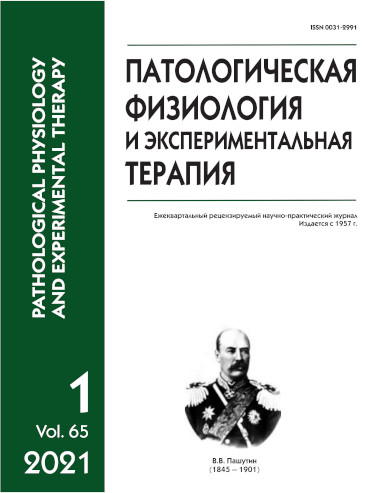Influence of afobazole on changes in the early postnatal period in BALB/c mice with fetal valproate syndrome
DOI:
https://doi.org/10.25557/0031-2991.2021.01.12-21Keywords:
autism spectrum disorders, ASD, fetal valproate syndrome, FVS, BALB/c mice, early postnatal phase, afobazoleAbstract
Introduction. Exposure of rodents to valproic acid during pregnancy is associated with increased incidence of autism spectrum disorders, and has been extensively used as an appropriate model of autism. Aim. To study early behavioral changes in BALB/c mice prenatally exposed to a single dose of valproic acid sodium salt (400 mg/kg) and a possibility of correcting these changes with afobazole. Methods. The study was performed on BALB/c mice with fetal valproate syndrome (FVS). The mice were daily injected orally afobazole 10 mg/kg or 0.9% sodium chloride from day 7 to day 14 of the postnatal development. The control group was injected with an equivalent volume (0.1 ml per 10 g body weight) of 0.9% sodium chloride. The condition of mice was studied from day 6 to day 14 of the postnatal development with evaluation of their physical development, maturation rate of sensory-motor reflexes, emotional-motor behavior, and precise coordination using a battery of «developmental» tests. Results. Administration of valproic acid to female mice on the 13th day of pregnancy led to delayed maturation of the offspring’s sensory-motor reflexes, impaired emotional-motor behavior and coordination of movements during the nesting period. Afobazole administered to mice with fetal valproate syndrome from day 7 to day 14 of the postnatal development at a dose of 10 mg/kg (daily, orally), corrected the disorders in the tests used for assessing retardation or disruption of nervous system development.Downloads
Published
2021-03-13
Issue
Section
Original research
How to Cite
[1]
2021. Influence of afobazole on changes in the early postnatal period in BALB/c mice with fetal valproate syndrome. Patologicheskaya Fiziologiya i Eksperimental’naya Terapiya (Pathological physiology and experimental therapy). 65, 1 (Mar. 2021), 12–21. DOI:https://doi.org/10.25557/0031-2991.2021.01.12-21.






